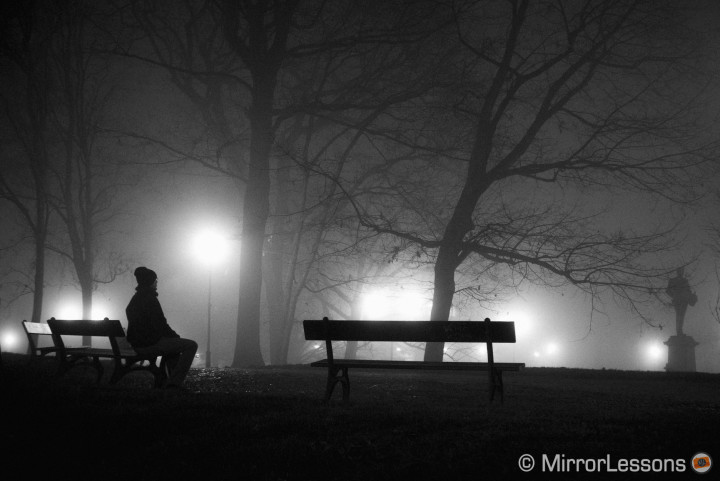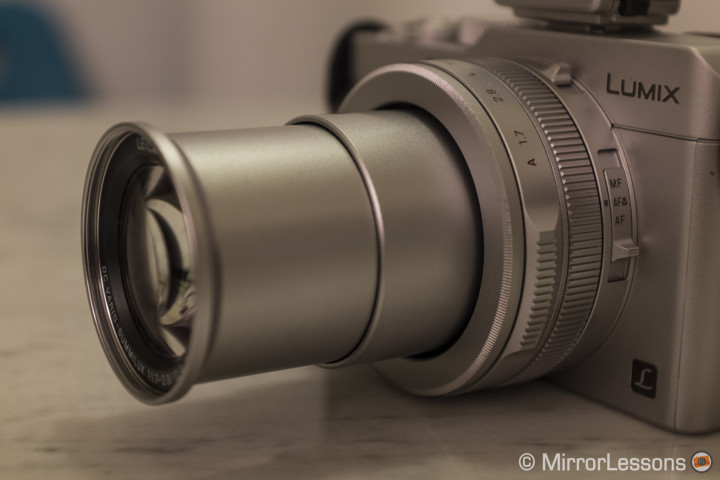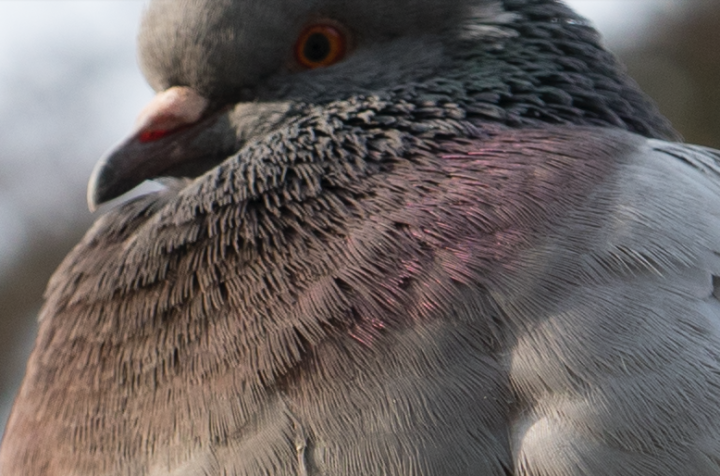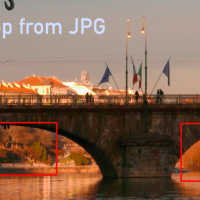Introduction
Back in December, I published my first impressions of the Panasonic Lumix LX100, the company’s first premium compact with a large 4/3s sensor. In the weeks that have passed since then, I’ve spent most of my days shooting with it in a variety of situations, from our Christmas celebrations in Italy and France to our mini-vacation around Lake Como. My colleagues would joke that the only time you wouldn’t see it around my neck was when I went to bed. (Quite the exaggeration!)

As I mentioned in the first article, I was initially unsure whether I’d grow to like this camera. The implementation of an electronic zoom, the removal of the touch-tilt screen found on all other recent Lumix models, and the lack of “true pocketability” were all factors that concerned me, and it took time to figure out to what degree I’d miss these features. Even now I have to say that I have mixed feelings.
On that note, let’s dive head-first into the LX100 review. If you haven’t done so already, I recommend you read part one where I mainly discuss the ergonomics, design, aspect ratio switch and autofocus:
First impressions of the Panasonic Lumix LX100 – Is it a worthy premium compact?
Ergonomics and Design – a few more thoughts
One glance and you’ll have to admit: the LX100 is a truly beautiful camera. When I have it around my neck as I walk down the street, it is amusing to see just how much attention it draws from passersby. Even with the external flash positioned on the hot shoe, it looks elegant.

I’ll repeat what I said in part one, which is that the size of the LX100 is anything but bothersome. Sure, it isn’t pocket-friendly like an RX100 III, but does it have to be? After all, it’s light, it’s quite small considering the sensor size, and has great haptics. All you have to do is find a comfortable strap, and you’ll hardly even know it is hanging around your neck. Plus it will fit inside most bags and pouches, including my Porteen mirrorless camera bag and National Geographic Explorer Pouch.

You might argue that to remain competitive on the premium compact market, the LX100 should be smaller. However the fact that it is slightly more substantial makes room not only for a larger sensor but also more external controls, a hot shoe for flash, a decently-sized built-in electronic viewfinder and a fast zoom. Five advantages in exchange for one small disadvantage – not a bad compromise, I’d say!
Though my feelings about the ergonomics and design are overwhelmingly positive, there are some things that still niggle me a little. I already mentioned the lens cap popping off at inopportune moments in my first article, and I’ve recently noticed that the paint scratches quite easily if you aren’t careful, at least on the silver version. The exposure compensation dial, too, doesn’t have as much resistance as I thought it did, meaning that it will rotate willy-nilly inside your camera bag. In short, never forget to check your exposure before your start shooting!
Note: there is a lens cap leash included in the box, so if you are worried about losing the lens cap, this would be your best bet.
Image Quality
I’m not going to dwell too much on image quality for the simple reason that there is nothing new to discuss. The LX100’s sensor is identical to that found inside the GX7, and performs just as well as basically any other Micro Four Thirds sensor in its category. The only difference is that it gives you 12MP resolution instead of 16MP due to its multi-aspect ratio feature, which I will discuss later on.

In short, I’ve found the colours produced by the sensor to be both attractive and realistic. The dynamic range is great, though it is definitely easier to recuperate details in the shadows than in the highlights in post-processing. As for high ISO performance, it is very good up to 1600 but begins to deteriorate from there on. To go beyond (12800 or 25600) will result in a noisy and blotchy image.
Below is a gallery of some of my favourite images taken with the LX100. They demonstrate the camera’s capabilities in a wide range of situations.
Panasonic Leica 24-70mm f/1.7-2.8 Fixed Zoom
My feelings for the LX100 zoom lens constantly teeter between love and frustration.
One one hand, we have this gorgeous fast zoom lens designed by none other than Leica itself. It remains fast throughout all the focal lengths, with a maximum aperture of 1.7 at 24mm (35mm equivalent) and 2.8 at 75mm. The bokeh is pleasant, the macro performance is excellent, and it produces very sharp images. So what could possibly be wrong?
In short, the zoom has some capricious tendencies and I blame this on it being electronic rather than mechanical. The most alarming moment was when the lens became jammed and refused to retract, even if I turned the camera on and off and took out the battery. Seeing the message “System Error [Focus]” glaring back at me from the screen was no comfort either.
After browsing a few forums, I discovered that this error isn’t uncommon amongst cameras with an electronic zoom. Basically, it means that grit has made its way into the lens mechanism. Thankfully for me, a dozen attempts to turn the camera on must have dislodged whatever was blocking the mechanism, and it now works fine. However the incident has made me even more cautious about keeping the lens in good condition, which isn’t easy as it protrudes quite a lot when fully extended and doesn’t come with a lens hood.
This episode aside, there is much good to be said about this lens, so let’s focus on the positive!
Coming back to the out of focus rendering, I was very pleased with the lens’ performance. The bokeh balls are perfectly round thanks to the 9 aperture blades and the overall rendering has a delicate creamy appearance. Since words never do visuals justice, here are a few images to show you what I mean.


Sharpness is also very good, even at its fastest aperture of 1.7. To demonstrate this, I’ve posted a few more images below (Raw files converted to JPGs in Lightroom) alongside their respective 100% crops.
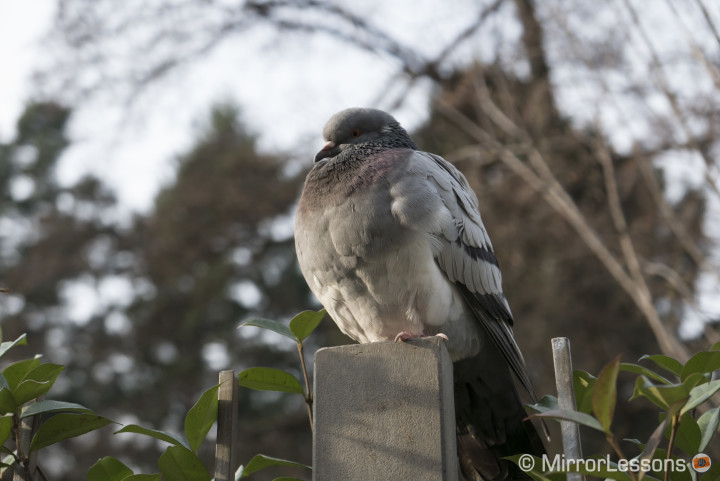


There has been some discussion on various forums about the sharpness of the JPGS being notably inferior to that of the Raw files, particularly for wide shots (as opposed to close-ups), but my samples haven’t shown a massive difference. The only point I can confirm is that foliage and tree branches tend to take on a slightly mushy appearance in the JPGs (see examples below) but it certainly isn’t anything to write home about, especially if you’re a Raw shooter by nature.

The macro capabilities of this lens are also excellent as long as you remain at the widest angle. You can get so close that the lens almost touches the subject. This ability is greatly reduced however as you start to zoom in.


To shoot in macro mode, all you have to do is use the dedicated switch on the side of the lens to go from AF to AF Macro. You can also change to MF mode via this switch.
I was also curious about the optical stabilisation of the lens, as Gordon Laing of CameraLabs had touched upon its lacklustre performance in his review. According to his tests, the slowest shutter speed he could use was 1/15 of a second at the maximum focal length with OS activated.
After performing a few tests myself with the same settings, I can more or less confirm what Gordon says. The performance isn’t as good as it could be, but I was able to take sharp images even at 1/8 of a second without too much effort. Anything below that is hit or miss. Some of my shots at 1/4 and 1/2 were 90% in focus whereas others were destined for the garbage bin.

A final point about the lens regards its flare. It is the flare you see on several Micro Four Thirds camera and lenses – purple, diffused and close to the light source. Depending on your angle, you might also see a small rainbow or large green orb appear, but this can be avoided by tilting the lens or changing positions. The flare isn’t always extreme and indeed in some cases, it can add some “oomph” to the photo, as in the case of the portrait below.

In conclusion, the 24-70mm zoom is undoubtably one of the primary reasons to buy this camera, regardless of its faults. Yes, I and many others would have preferred a mechanical zoom for the benefit of more precise focussing and fewer electronic errors but as they say, beggars can’t be choosers.
Fun with Flash
In the place of a pop-up flash, the LX100 comes with a small flash unit which you can position on the hotshoe. I feel this was a good decision as it has given more space to the external dials, viewfinder and hotshoe.

Many have called the LX100 “the strobist’s dream” thanks to a very special feature – it has a maximum flash sync speed of 1/4000 of a second, which is also the camera’s maximum mechanical shutter speed. This is made possible by the camera’s leaf shutter.
In order to use the flash at 1/4000 at the widest angle, you must close your aperture to f/4. This becomes f/6.3 at the longest focal length. The flash will not fire with either the silent shutter or electronic shutter activated.
I only tried the flash unit that comes with the LX100 but there is nothing to stop you from experimenting with larger and more powerful external flash units if you wish.

Aspect Ratio – See the world differently
A very nice minor feature is the aspect ratio switch on the top of the lens barrel. It allows you to switch between the four classic aspect ratios: 3:2, 16:9, 1:1 and 4:3. It is because of this feature that any image you take with the LX100 will have an effective resolution anywhere between 10MP and 12MP (according to the aspect ration chosen), despite it having the same 16MP sensor as the GX7.
I already went over the technicalities of this feature in part one but never actually posted any photos to demonstrate it in action. So, before we go any further, here are a few for your viewing pleasure:
I had initially thought that I wouldn’t use this feature very much as it is possible to change your aspect ratio in post-production but I couldn’t have been more wrong. Once I started playing around with it, I couldn’t stop. Suddenly the walk to work that I’d forever been shooting at 3:2 was now available to me in three novel frames, and I was seeing compositions that I hadn’t imagined before. I found it amazing how a slight change in perspective and framing could open up a whole new avenue of creativity.

Raw editing in-camera
Do you find Raw editing on the computer tedious? Are you primarily a JPG shooter but occasionally like having the flexibility to tweak a file? If so, the LX100’s in-camera Raw editing feature is the tool for you. You can adjust most settings, from highlights and shadows to contrast and sharpness, all with a few clicks of the command dial. You’ll be left with the original Raw but can export a brand new JPG in-camera with your desired changes.
Below I’ve posted an example of a Raw file and the subsequent JPG I created using the in-camera editor. I transformed it into monochrome, added some contrast and sharpness, opened up the shadows and bumped up the highlights a little.
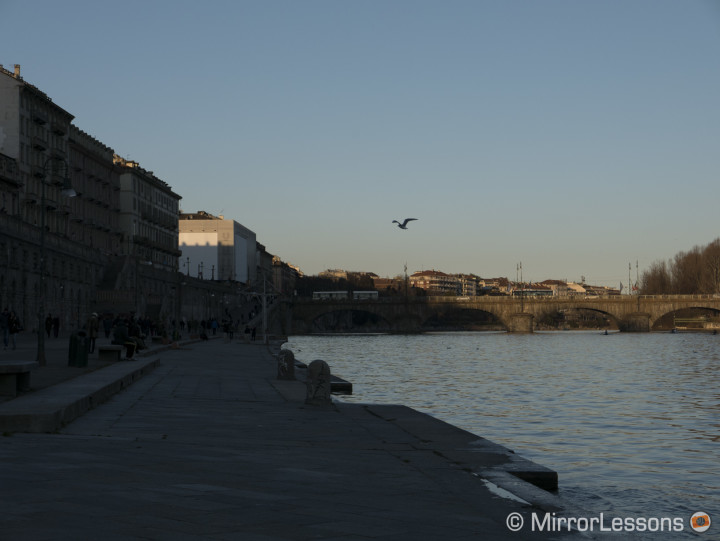

The result isn’t bad at all, although, as a Raw shooter, I’d never trade in a proper post-production software program like Lightroom for this feature. Why? I simply prefer the extra flexibility Lightroom gives me, and the fact that I can see my adjustments better on a big screen. I also love working with presets like the Rebecca Lily Pro Set. That said, it is good for quick and easy editing on the fly.
4K Video – Is it necessary?
The final star feature of the LX100 (and this one really is a doozy) is its ability to record 4K video internally. The first Lumix to have this was the high-end GH4, so that the same feature can be found on what is essentially a compact camera is quite a feat on Panasonic’s part.
The LX100 can shoot 4K footage up to 25p in MP4 format with a bitrate of 100mbps which is the same quality as the Panasonic GH4. Other options include Full HD up to 25p in MP4 or AVCHD format. The quality is really good like on most Lumix cameras, with very sharp images, nice colour rendering and good dynamic range. You also have the option of time-lapse and stop-motion animation. From these you can create a 4K video in camera as well. The LX100 has all the basic and essential settings to capture beautiful footage but nothing more. There aren’t any slow motion capabilities, Cine Like profiles or real audio controls except a simple volume control in 4 steps.
Changing your focus point in MF mode is a breeze with the LX100 thanks to its smooth focus ring. (It becomes even easier if you activate focus peaking.) The same cannot be said for the aperture ring however, which turns in small yet decisive clicks. It is satisfying to operate for still photography but proves a burden for video as you can hear the clicks in your footage.
A sub-feature of 4K video I’ve grown to love is the possibility to extract 8MP stills from footage on your camera. All you have to do is take a video in 4K mode, pause it at the frame you like best, press the centre button on the command dial and voila, an 8MP still gets saved to your memory card. Below you can see a couple of stills I extracted from footage taken in Valentino Park in Turin.

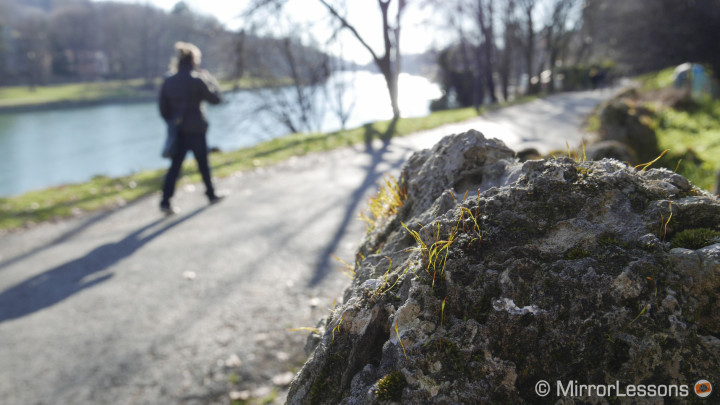
While 4K is undoubtably a fun and useful feature, I do wonder what purpose it has on a compact camera other than to generate excitement amongst gimmick-loving consumers. I could understand the choice better if the camera had an entire series of professional video features like external microphone/headphone input, smooth aperture ring or a tilt-touch screen.
If I were to suggest a second body for video, I’d much sooner recommend a GX7 with its tilt-touch screen and interchangeable mount than an LX100, despite it not having 4K video. Which brings us to our final discussion…
A tough choice – LX100 or GX7?

The Lumix GX7 was and still is one of my favourite mirrorless cameras to date. It was the first Lumix to embrace the rangefinder appearance, equipped with interesting features such a tilting EVF, a time-lapse function and in-body stabilisation for still photography.
The question is: is the LX100 or GX7 the better deal?
Cost
In terms of cost, the GX7 camera body is certainly less expensive than the LX100 due to it being an older model. However, we all know that you need a lens to shoot, and the closest lens to the LX100’s zoom in terms of specs is the Lumix 12-35mm f/2.8. The problem is that this lens on its own costs about the same as the LX100 itself.
Lenses
On the other hand, the GX7’s interchangeable gives you the freedom to try different lenses. The LX100’s 24-75mm is a good all-rounder but it won’t cut the mustard for extreme wide-angle photography or 1:1 macro. If you enjoy experimenting with a variety of photographic styles, you may find the LX100 somewhat limiting.
Video
Yes, we all know that the LX100 has 4K recording and Panasonic’s excellent Depth from Defocus autofocus technology but I’m going to come out and say it – the GX7 is the better camera for video shooting in my humble opinion. The tilting touch screen, slightly larger body and optical stabilisation in the Lumix lenses make all the difference to a comfortable shooting experience.
Now, if the GX8 or whatever the GX7’s successor may be has the same video technology as the LX100, I will be a very happy camper! (Would it be too much to dream of 5-axis stabilisation on future Lumix bodies? 🙂 )
Conclusion
I believe that your choice all comes down to a) whether you want the freedom of interchangeable lenses, and b) if you’re a serious video shooter.
While the 24-75mm zoom covers almost all the bases, it won’t let you capture the Colosseum in all its enormity or focus in on the minute details of a fly’s eye. But perhaps you don’t care about these things anyway. If so, the LX100 is a no-brainer.
As for video, I would lean towards the GX7 or better yet, wait until its successor comes out. If it doesn’t have 4K, Depth from Defocus technology and perhaps even a handful of new offerings, I’ll be very surprised.
Conclusion – Should you buy the LX100?

I began this article by revealing my mixed feelings about the LX100, and I end it by saying that these feelings probably won’t change. There are many things I love about this camera, such as the gorgeous aesthetics, handling, image/video quality and overall performance, but the positives are sometimes undermined by a handful of quirks.
The good thing is that many of these issues can probably be fixed on future models. Things like the lack of a touch/tilt screen and lens hood, the caprices of the electronic lens, and the lens cap with a mind of its own.
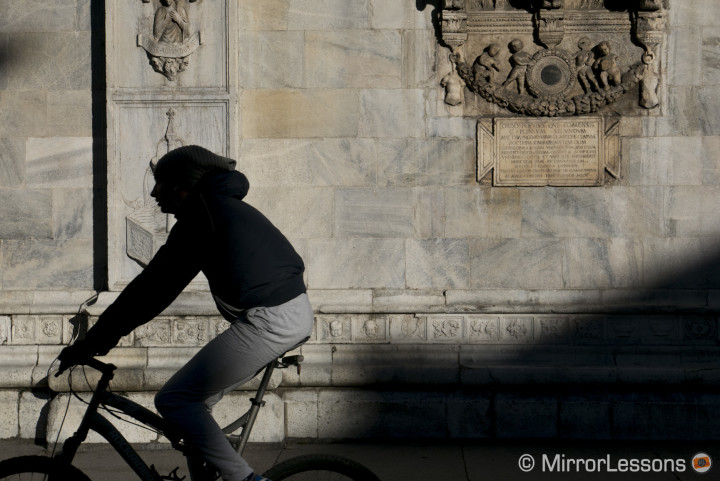
Would I recommend the LX100? Yes, as long as you are positive that the interchangeable lens route won’t interest you for the foreseeable future. It is one of the most powerful, feature-rich premium compacts out there at the moment, and despite its issues, is an enjoyable photographic companion to have with you at all times.
Do you own the Lumix LX100? If so, share your thoughts about this camera below!







